Their Osprey 140 is constructed of 'Royalex'
a composite material that is very strong and very light, and also, unfortunately,
very expensive. The payoff is that it is much lighter than the polythene
material that most canoes of this type are made of, resulting in a boat
of almost half the weight at only 54 lbs.
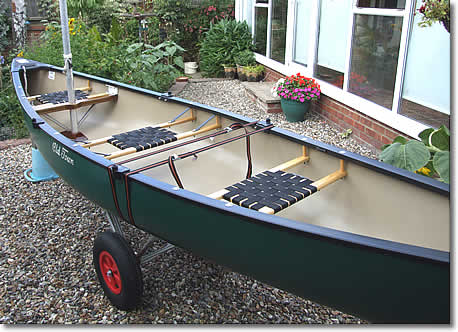 |
Here she is sitting on her Eckla Trolley, with the mast stepped.
|
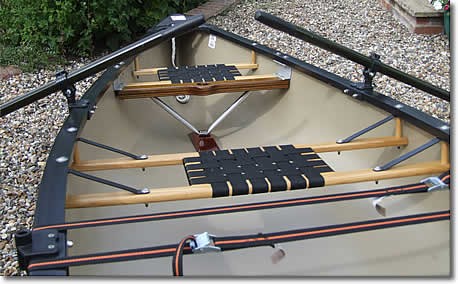 |
Classified as a 'Sporting' Canoe,
she is fitted with two pairs of rowlocks as standard, so that she
can be rowed from the centre or bow seat. (three seats are fitted).
The oars are fitted with special pintle type rowlocks, which are
simpler and stop the oars sliding out, but prevents them from being
'feathered' on the return stroke. |
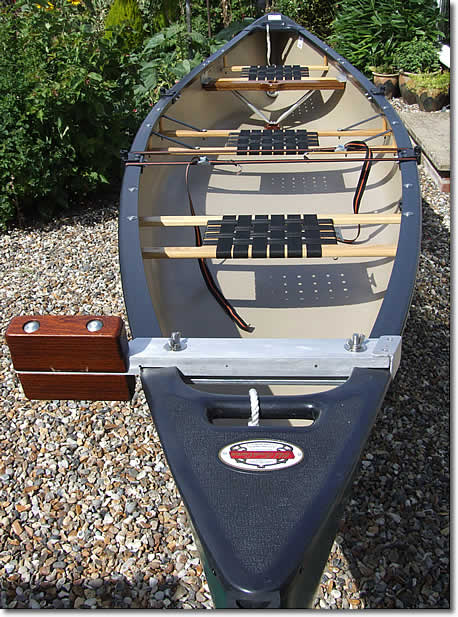 |
Although there are plenty of ready made outboard motor mounts
available, they seem quite expensive for the amount of work involved,
so I made my own.
Constructed from 65mm x 25mm x 5mm aluminium channel, the mahogany
pad holds either my Minn Kota electric, or my Yamaha
2hp outboard firmly in place.
The wooden pad needs to be canted at an angle of about 20 degrees
to the vertical, to enable the outboard leg to be trimmed at the
right angle.
|
 |
I adapted the rudder from my Folbot Super 17, by bolting
an aluminium double angle bracket to the bow of the canoe.
Why the bow ? well, the hull shape is exactly symmetrical longitudinally,
and I expect to be solo most of the time, and there is better
weight distribution solo when using the canoe stern first, because
the normal bow seat is further from the end than the stern
seat.
I retained the Folbot push-pull rudder bar, and fitted
a lifting line to enable me to control it from the middle of the
canoe.
|
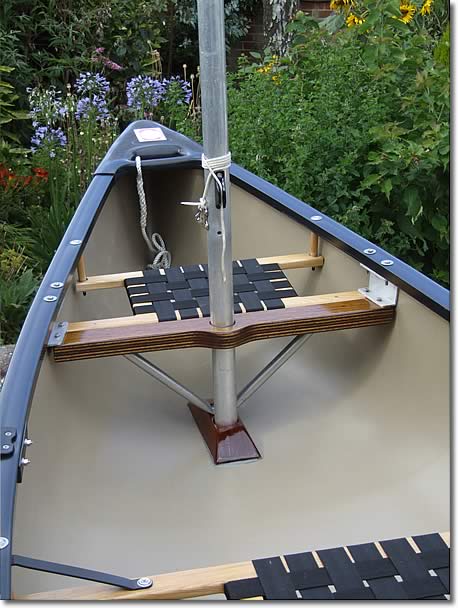 |
The aluminium sectioned mast (also from the Folbot sailing
kit), is mounted, unstayed, through an extension to the stern
thwart, braced to a mahogany block stuck to the floor with sealastic.
It is also diagonally braced with aluminium tube, to prevent any
flexing of the hull at that point.
Not visible in this photo, there is a brass drawbolt under the
seat that locates into a hole in the aluminium mast tube, to prevent
it lifting out, (because there are no shrouds to hold it down).
The sides of the laminated mast collar are fixed very rigidly
to the gunwhales be very strong, (but very light), aluminium channel.
|
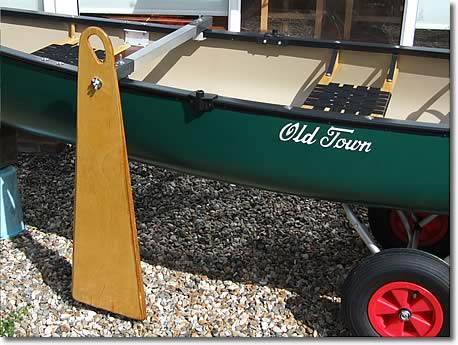 |
The leeboard is from the Folbot
sailing kit as well, mounted on a 40mm square aluminium crossbar.
This is clamped to each gunwhale, to enable adjustment to balance
the centre of sail effort, with the centre of lateral
resistance of the board. |
| |
|
|

